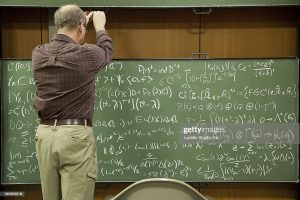
A $500,000 grant from the National Science Foundation funded a 22-page “study” that used Critical Race Theory to argue that physics was racist, in part because it rewards students for getting the right answer and uses whiteboards.
The paper was funded through National Science Foundation Grant No. 1760761, which gave $500,000 to Seattle Pacific University for “understanding centrality and marginalization in undergraduate physics teaching and learning.”
“Critical Race Theory names that racism and white supremacy are endemic to all aspects of U.S. society, from employment to schooling to the law,” the paper reads. “We see the outcomes of this in, for example, differential incarceration rates, rates of infection and death in the era of COVID, and police brutality. We also see the outcomes of this in physics.”
In exchange for the hefty government funding, two scholars — a “chronically ill and disabled, physics-Ph.D.-holding, thin wealthy white woman” and a black man — watched videos of four science lessons, and spoke to two students and the teacher over Zoom.
The paper indicts all of physics as racist by isolating a six-minute presentation of a group project in one of the videos and turning it into a metaphor. In the presentation, one male group member does all the work for the group, while the other two female members make jokes and ask questions demonstrating that they did not understand the topic. After the group solved the problem of how much heat it would take to raise a bucket of water’s temperature one degree, the student who had done all the work presented the results to the class on behalf of his group, at his peers’ behest.
The hard worker is Middle Eastern, while the freeloaders are white and Hispanic. Nonetheless, the paper says the Middle Eastern student exemplified “whiteness” by being “centered” (receiving attention since he was the one actually doing the work) while the others were “marginalized.”
The group was tasked with diagramming how much heat it would take to raise a bucket of water’s temperature one degree, an “energy interaction diagram” (EID). “In this context, it makes sense that the EID, standing in for correctness and/or physics, will capture the attention of the actors, and it also makes sense that the person closest to it (by consensus or by force) would also receive the most attention. Activity that is not seen as productive toward these ends would also be seen as less valuable, highlighting ways in which whiteness and capitalism intersect,” the paper says.
In the researchers’ postmortem interview with one of the “marginalized” group members, she rejected their premise that she was being oppressed, and said she wanted the male to do most of the work and be the spokesman for their group to the class because he knew the answer and she didn’t.
The paper says it was racist that his presentation on raising the temperature of water consisted of the correct answer, instead of incorporating his freeloading group members’ comments, which consisted of a joke and asking whether water was liquid. This had the effect of “centering white perspectives on historical events, downplaying white violence, disconnecting current racial violence and trauma from its long history, and constructing mythologies where domination and centering appear ‘God-given and right,’” the government-funded paper says.

It says the professor was also racist because she wanted her students to learn physics. “We would argue that Iris’ agency is constrained by whiteness. The outcome expected of her teaching is students who can access the center defined by physics,” the paper says. “We contend that the structure of schooling — and in particular, mechanisms of control such as grades or academic qualifications — co-produces whiteness.”
Ironically, while the paper’s only finding of “whiteness” in a classroom was a Middle Eastern student supposedly oppressing his peers by helping them, it is the researchers themselves who seem to have the white person take up most of the space, with the white researcher conducting the Zoom interviews, referring to herself in the first-person in the text, and placing her name first.
Anticipating the rebuttal that cherry-picking a single exchange in one class lesson and turning it into a far-reaching metaphor is not rigorous research, the federally funded academics simply say anyone who said so would be “engaging in bad faith argumentation.”
Justifying how a Middle Eastern male working hard, getting the right answer, and helping his peers represents a negative trait called “whiteness” that is allegedly everywhere, they reason that “whiteness is pervasive, insidious, and complex.”
Yet they also could not describe it. “Part of the difficulty in characterizing whiteness lies with its having no genuine content,” the paper says.
Story cited here.
Scroll down to leave a comment:





